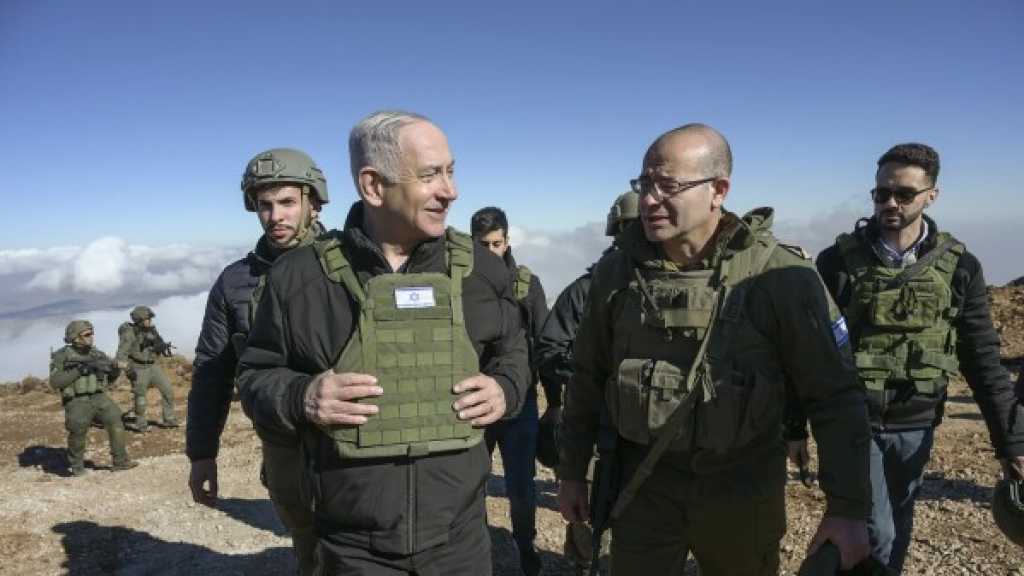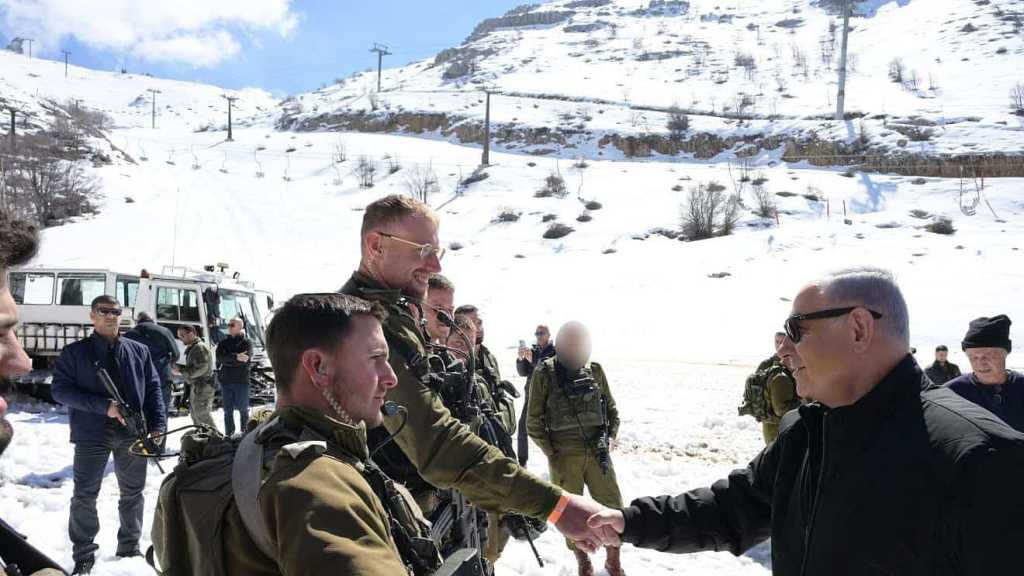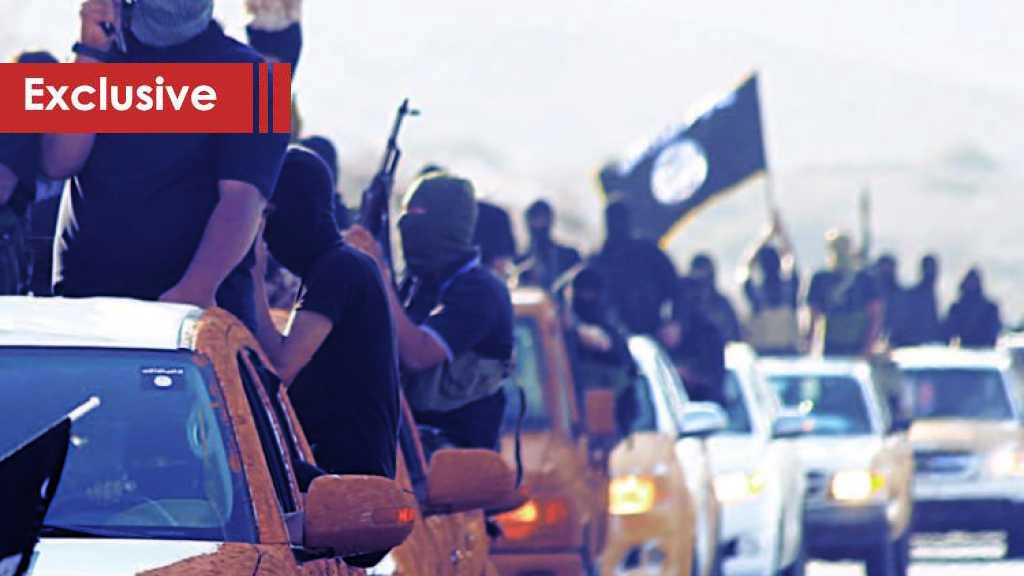
Soleimani and the Battles That Paved the Road to Al Bukamal

By Khalil Nasrallah
The battles against the Daesh [Arabic acronym for "ISIS" / "ISIL"] terror group in the Syrian Badiya [Desert] and across western Iraq were not a brief occurrence. The terrorist organization grew in size and strength as it pursued American interests, even if there was no direct coordination in all regions.
Washington benefited from the presence of the organization and its expansion throughout Iraq and Syria. It replaced the US occupation following the American withdrawal in 2011 and cut off the strategic roads between Iran and Syria, and subsequently Lebanon, by positioning itself in the center of the Syrian Desert and areas in western Iraq.
It quickly became clear that Washington was positioning itself to maintain a presence on the ground, which it would use to blackmail Iraq and Syria, and subsequently Tehran.
This became apparent through the expansion of Daesh, and the return of American troops to the region via the blackmail of Iraq after Daesh took Mosul in 2014. Next, Nuri al-Maliki’s government was overthrown, the Americans secured a direct military presence on the ground and an international alliance was formed that launched its first operations in northeastern Syria, where the famous battle of Kobani took place in Ayn al-Arab.
This scene demanded a strong presence of the resistance forces in the region. And there was no one better for the job than the commander of the Quds Force, Major General Qassem Soleimani, who never left the fronts in Syria. He was often seen on television next to a great Iraqi commander, Abu Mahdi Al-Muhandis.
In Iraq and Syria, the strategic battle began, and achievements were recorded through strikes on terrorists and the gradual liberation of territory.
2017 was the year of unprecedented decisiveness, in which martyr Qassem Soleimani, along with the resistance forces and the Syrian army, succeeded in achieving one of the most important strategic victories, which was reconnecting the road from Tehran to Beirut.
In the middle of that year, the great Dawn operations began. During this time, the Americans were stationed in the Al-Tanf region in southeastern Syria and in areas in the northeast of the country. They were supporting armed terrorist factions.
For its part, Daesh held positions throughout the Syrian desert, along the borders of Aleppo in the north, east of Homs, and east of Iraq.
In the first phase, which started from the areas of the eastern countryside of Damascus, in parallel with operations in eastern Homs and eastern Aleppo, the Americans carried out raids at the Zaza Triangle, near one military contingent belonging to the resistance forces.
The Americans sought to implement ‘red lines’ for those forces that had launched their operations from an area, which would pave the road to Al-Bukamal at a later stage, i.e., the Syrian-Iraqi border. This meant that the advancing forces would link up with others coming from Iraq, where operations unfolded along the border, especially Al-Qaim.
On that day, after the raid, Haj Qassem Soleimani’s helicopter landed near the site of the attack. In his hand was a leaflet which had been dropped by American planes, and it contained warnings against advancing further towards Al-Tanf. Hajj read the leaflet, looked at the field commanders there, and pointed his hand towards the east: We will continue.
At that time, it was clear to everyone that Hajj was able to make a quick decision, as a result of his realistic and precise understanding of the course and dimensions of the battle.
This moment was a great turning point. The decision has been made. Head east, whatever the price.
The exact course of operations requires a great deal of explanation, but it is sufficient to refer to the last two months of that year.
As the battles in the Syrian desert raged, great successes in the stages of Operation Dawn were being recorded. Meanwhile, forces on the Iraqi front were making important achievements. The advance west towards the Syrian border, under the supervision of Abu Mahdi Al-Muhandis as well as the presence of Hajj Qassem and leaders in the Iraqi army and the resistance forces, began.
All the while, the Americans were expanding through local forces, including the SDF, from the far northeastern corner of Syria towards Raqqa, then al-Shaddadi, and downward towards the eastern countryside of Deir ez-Zor, and then down still towards Al-Bukamal.
The Americans relied on all means available. That’s when the depth of their relationship with Daesh was revealed, as the terrorist elements were rampaging, collapsing, and cowering in the face of the forces of the axis of resistance as well as the Americans and the SDF.
All of the genuine data showed the terrorists were engaged in withdrawal and handover in favor of the Americans, not to mention the transfer of Daesh leaders from northeastern Syria and sometimes the desert to al-Tanf.
The Americans also deliberately made threats to strike any force that crosses to the east of the Euphrates from the Syrian front. For this reason, they deliberately disrupted the air operations as the forces approached the second juncture, that is, a short distance from Al-Bukamal.
On that day, according to Western reports, the CIA director sent a letter to Haj Qassem Soleimani through mediators. The great martyr and outstanding leader did not receive it. He even refused to see its content, which forced the Americans to say that they were warning him not to threaten their interests, especially in Iraq.
The message, especially its timing, meant that the Americans sensed that Haj Qassem would continue the journey intended to the roads, and thus hit a major American target. Perhaps the letter was an attempt to make a deal that would preserve the Americans' power at the borders.
At the end of the year, Haj Qassem appeared in the Al-Bukamal region, closely following the course of that battle and the work of the forces from the Iraqi and Syrian sides in Al-Qaim and Al-Bukamal, as their liberation translated into the first strategic strike against a part of Washington's project.
Haj Qassem succeeded in achieving the goal, when the forces coming from Iraq met those coming from Syria, and the Al-Qaim-Al-Bukamal crossing was opened.
In these battles, Haj Qassem stood shoulder-to-shoulder with his men on the frontlines. He personally supervised one of the most important battles, which, if successful, and it was, meant a blow and failure for the American objective of keeping control of the borders between the countries and the forces of the axis of resistance severed and under its supervision. Here, we are not talking about armaments, but trade and the economy.
Haj Qassem mastered the selection of targets that hindered American designs. Every battle that took place in Syria and Iraq bears witness to this.
We understand from his great role in the battles in the Badiya, his strategic thinking before making any move. And if we want to read about the results of those achievements, we can simply get into a car and drive from Beirut, cross Syria and head to Iraq, and from there make our way to Tehran. If we want to, we can even continue driving further East.



